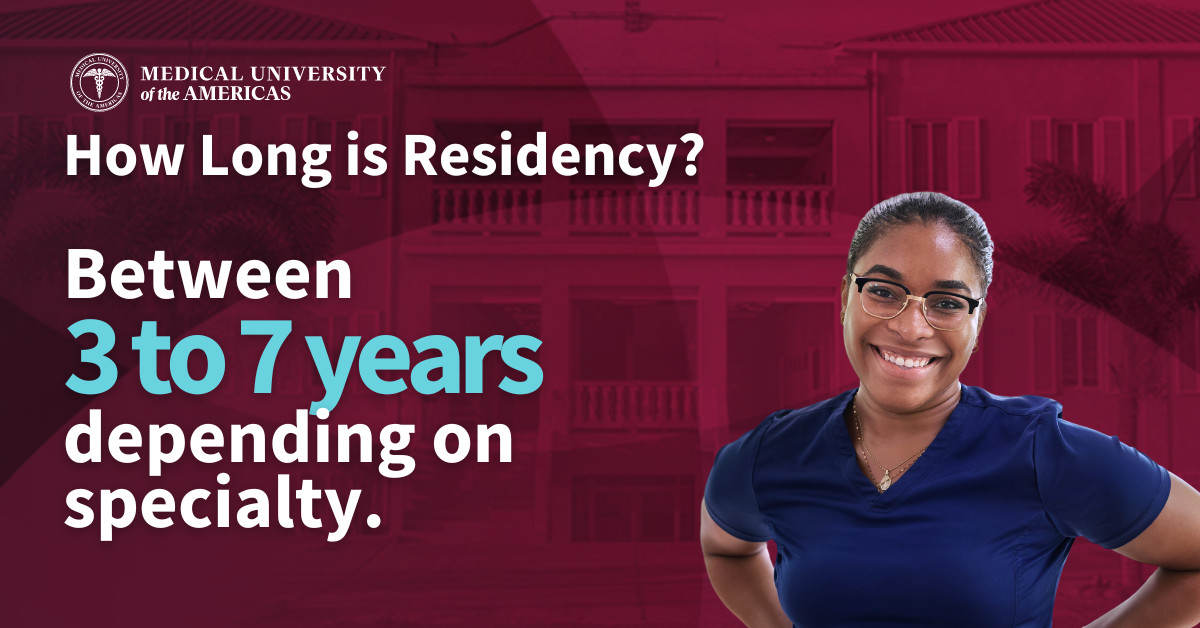Aspiring to a career as a physician is a commendable goal, and while acceptance into medical school might feel like the summit, it’s truly just base camp. The path to becoming a licensed doctor involves numerous stages, both within and beyond those medical school walls. Among these crucial steps, the medical residency program stands out as a pivotal phase in your journey.
You might have a general understanding of what a medical residency entails, perhaps gleaned from alumni stories or online research. However, to truly grasp the intricacies of medical residency programs and what awaits you, let’s delve deeper into this essential phase of medical training.
Understanding Medical Residency: The Core Definition
A medical resident is essentially a doctor in training. Officially, they are a graduate holding a Doctor of Medicine (MD) degree who is enrolled in a post-graduate program. This program is rigorously accredited by the Accreditation Council for Graduate Medical Education (ACGME), ensuring standardized and high-quality training. During a medical residency, these doctors work within hospitals and clinics, furthering their medical education and practical training within a chosen specialty. This intensive period is what’s known as ‘residency’. As part of their residency, a resident doctor actively participates in patient care, which includes diagnosing illnesses, developing treatment plans, and managing patient health under supervision.
The first year of residency carries a special designation. These doctors are referred to as PGY-1s (Post Graduate Year 1) or interns. This initial year is structured as an internship, laying the groundwork for specialized training. In their second year and beyond, interns transition to residents, increasingly concentrating on their chosen medical specialty. For those who pursue even more specialized areas after residency, they become known as fellows, and their subsequent training is termed a fellowship.
How Medical Residency Programs Function
The prerequisite for entering a medical residency is completing medical school and earning an MD degree. To legally practice medicine during their residency, doctors must obtain a medical license specific to the state or jurisdiction where they are training. Initially, junior residents might hold a restricted training license. However, to advance in their training or to begin independent practice, a full, unrestricted license is required. The residency itself is structured as a period of progressive learning. Resident physicians gradually take on more responsibilities in patient care, all while being supervised by attending physicians and senior residents. This hands-on approach allows residents to follow patients over time, gaining invaluable experience in observing the progression of diseases and the effectiveness of treatments.
 What is a medical resident?
What is a medical resident?
Consider the journey of Dr. Vijitha Mahalingam, a Medical University of the Americas (MUA) alumna. After graduating from MUA in 2019, she entered a Psychiatry residency at Queen’s University in Kingston, Ontario. By her fourth year of residency, Dr. Mahalingam was deeply immersed in mental health care, demonstrating the focused expertise residents develop through their training.
Medical Residency Placements and Specialization
The path to residency involves specialization choices. Typically, medical students decide on their desired medical specialty during their fourth year of medical school. The range of specialties is broad, including fields like anesthesiology, obstetrics and gynecology, pediatrics, radiology, and surgery. This specialization decision is crucial as it directs their applications to specific medical residency programs. The selection process involves researching and applying to programs that align with their chosen field and career aspirations.
The Residency Match Process Explained
For medical students in the United States, the National Residency Matching Program (NRMP) is a pivotal event. Often referred to as “The Match,” it represents the culmination of extensive effort. In the first half of their final year, students apply to accredited residency programs within U.S. teaching hospitals or medical centers. This involves submitting applications, visiting program sites, and undergoing interviews with program directors. Following interviews, both students and residency programs create rank lists. Students list their preferred programs in order of preference, and program directors rank their interviewed candidates. These lists are submitted to the NRMP, which uses an algorithm to match students to residency programs. The outcome is revealed around late March, on what’s known as Match Day. On this day, students discover if and where they have been matched for residency. Encouragingly, most students are matched with one of their top residency program choices.
How to Prepare for Your Medical Residency
Preparation is key to a successful residency. One of the most valuable steps you can take is to seek out mentors. The guidance of experienced professionals is invaluable for your training and professional growth. For example, a mentor who is a leading transplant surgeon can impart invaluable skills and insights that contributed to their success. Adopting a mindset of lifelong learning is also crucial. Recognizing that continuous education and maintaining board certification are integral to a physician’s career will significantly benefit you throughout your medical journey.
The Role of a Resident Physician: Daily Responsibilities
Resident physicians are active participants in patient care within various hospital and clinic settings. You’ll find them in emergency departments, intensive care units, general wards, and operating rooms. As a doctor in training, a resident hones essential skills, including conducting physical examinations, ordering and interpreting lab work and diagnostic tests, performing medical procedures, documenting patient histories, and prioritizing personal well-being. They also gain critical experience in communicating adverse events and delivering difficult news to patients and families.
In hospitals, a significant portion of residency training occurs during rounds. These are structured sessions where a team of doctors and healthcare professionals collaboratively reviews patient cases, assesses progress, and adjusts treatment plans. Alternatively, residents may be based in outpatient clinics or doctors’ offices, where they assist with patient consultations and treatments. Coordination of patient services with other members of the healthcare team is also a routine aspect of a resident’s responsibilities.
Medical Residency Length: How Many Years?
 Medical Residencies Length
Medical Residencies Length
A common question among medical students is, “How long is medical residency?”. The duration varies significantly depending on the chosen specialty, generally ranging from 3 to 7 years. Here’s a breakdown of typical residency lengths for several specialties:
| Specialty | Length of Residency |
|---|---|
| Family Medicine | 3 years |
| Internal Medicine | 3 years |
| Pediatrics | 3 years |
| Emergency Medicine | 3-4 years |
| Obstetrics and Gynecology | 4 years |
| Urology | 5 years |
| General Surgery | 5 years |
| Plastic Surgery | 6 years |
| Neurosurgery | 7 years |
For those aiming for highly specialized medical fields, such as pediatric cardiology or surgical oncology, fellowship training is often required after residency. A fellowship provides further specialized training in a subspecialty.
Medical Resident Salary and Benefits
Understanding resident doctor salaries is important for financial planning. Resident salaries, like those in many professions, are influenced by factors such as geographic location, years of experience within the residency, and the medical specialty. In 2024, the average annual salary for first-year medical residents in the United States was approximately $63,000 USD, according to the Residents Salary and Debt Report. Salaries typically increase by $2,000 to $5,000 USD for each subsequent year of residency.
Beyond salary, residency programs also offer benefits packages. These can vary by program but commonly include:
- Competitive medical resident salary
- Comprehensive health insurance coverage
- Paid vacation time, typically 2 to 4 weeks annually
- Stipends or contributions for meals and parking
Life After Medical Residency: Career Paths
Upon completing a medical residency program, doctors have diverse career paths to pursue. Common options include:
Fellowships
Many doctors opt to pursue a fellowship after residency. This advanced training, lasting at least one year, focuses on a subspecialty within their residency field. Fellowships are designed to develop expertise in highly specialized techniques and knowledge, often positioning doctors as specialists in their chosen niche.
Medical Practice
With residency completed, doctors are eligible to apply for a full, unrestricted medical license. This opens doors to various practice settings, including private practices, group practices, or employment within hospitals and clinics.
Board Certification
Board certification is a voluntary but highly regarded credential. Many doctors pursue board certification in their specialty after completing an ACGME-accredited residency. Certification signifies a physician’s advanced knowledge and competency in a specific medical field, such as internal medicine, pediatrics, or surgery.
Embarking on a fulfilling medical career begins with a strong foundation in medical school. If you’re ready to take the first step, contact us today to explore the MD program at MUA and learn how we can help you achieve your aspirations in medicine.
Frequently Asked Questions About Medical Residents
What is a hospital resident?
A hospital resident is a medical doctor (MD graduate) engaged in a residency program within a hospital setting. This structured program is designed to cultivate essential skills and knowledge in their chosen medical specialty, preparing them for independent practice. Residencies typically range from 3 to 7 years, depending on the specialty.
What is residency after medical school?
Residency is the phase of specialized medical training that follows medical school graduation. New doctors enter residency to focus intensely on a chosen medical specialty for 3 to 7 years. This period is crucial for developing expertise under supervision and is a mandatory step toward medical licensure and independent medical practice.
What do you call a doctor in residency?
A doctor in residency is called a medical resident, or simply a resident. First-year residents are also commonly referred to as interns or PGY-1s (Post Graduate Year 1).
How long after med school is residency?
Residency begins immediately after graduating from medical school. There is no gap year between medical school and the start of residency. The duration of residency varies by specialty, ranging from 3 years (e.g., Family Medicine) to 7 years (e.g., Neurosurgery).
